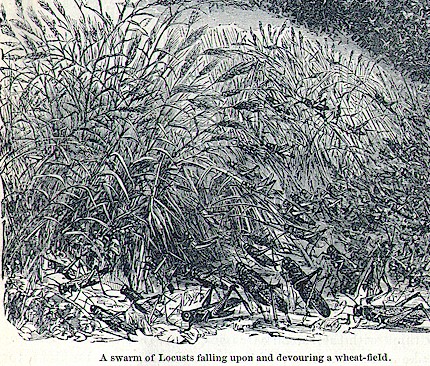
|
|
|
For many of us, our introduction to the Grasshopper Plagues came when we first read Laura Ingalls Wilder's On the Banks of Plum Creek. In the chapter, "The Glittering Cloud" Laura gave an excellent account of what it was like to have actually had the hordes of grasshoppers converge on their homestead. One soon understands the hopelessness that pioneer families must have felt as the hoppers consumed virtually everything they had.
Although we commonly refer to them as Grasshoppers both then and now, they were actually Rocky Mountain Locusts. In appearance, they do look very much like the grasshoppers of today. Much of the midwestern prairies were visited by the millions of Rocky Mountain Locusts that would fly in in such numbers as to appear to be a cloud blocking the sun. Click here to see an 1874 map that shows the grasshopper plague area. Laura's experience took place in Minnesota but she wrote her books many years later when she lived in southern Missouri. This site is designed to demonstrate the effects that the Rocky Mountain Locust had on Missouri.
Here is a drawing of the Grasshopper infestation from the 1874 Yearbook of the Missouri State Board of Agriculture, Report of the State Entomologist (p. 156).

Visit these pages to learn more about the Grasshopper Plagues:
History of the Missouri Beef Industry
This website was designed as class project in Agricultural History at Southwest Missouri State University . Students who developed the grasshopper pages are Aaron Rieder, Doug Pascoe, Brad Evans and Jason Phillips.
Appreciation is expressed to Dr. Michael Roling, Entomologist at Southwest Missouri State University for his advice, encouragement, and for the use of his materials.